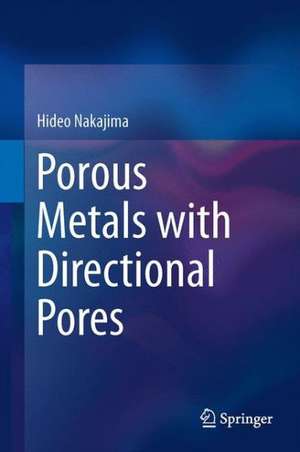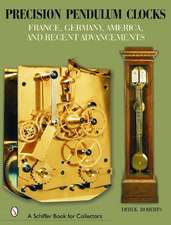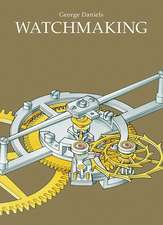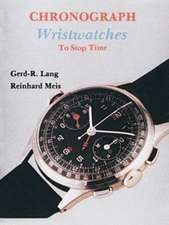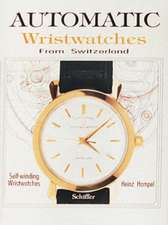Porous Metals with Directional Pores
Autor Hideo Nakajimaen Limba Engleză Hardback – 8 oct 2013
| Toate formatele și edițiile | Preț | Express |
|---|---|---|
| Paperback (1) | 726.85 lei 6-8 săpt. | |
| Springer – 23 aug 2016 | 726.85 lei 6-8 săpt. | |
| Hardback (1) | 649.87 lei 6-8 săpt. | |
| Springer – 8 oct 2013 | 649.87 lei 6-8 săpt. |
Preț: 649.87 lei
Preț vechi: 764.55 lei
-15% Nou
Puncte Express: 975
Preț estimativ în valută:
124.37€ • 135.04$ • 104.47£
124.37€ • 135.04$ • 104.47£
Carte tipărită la comandă
Livrare economică 22 aprilie-06 mai
Preluare comenzi: 021 569.72.76
Specificații
ISBN-13: 9784431540168
ISBN-10: 4431540164
Pagini: 300
Ilustrații: XII, 284 p. 244 illus., 43 illus. in color.
Dimensiuni: 155 x 235 x 20 mm
Greutate: 0.68 kg
Ediția:2013
Editura: Springer
Colecția Springer
Locul publicării:Tokyo, Japan
ISBN-10: 4431540164
Pagini: 300
Ilustrații: XII, 284 p. 244 illus., 43 illus. in color.
Dimensiuni: 155 x 235 x 20 mm
Greutate: 0.68 kg
Ediția:2013
Editura: Springer
Colecția Springer
Locul publicării:Tokyo, Japan
Public țintă
ResearchCuprins
Introduction.- Various fabrication methods of cellular metals and foamed metals.- Materials definitions.- Fabrication methods of porous metals with directional pores.- Nucleation and growth mechanism of pores in metals.- Control of pore size and porosity in lotus-type porous metals.- Details of fabrication techniques of various lotus metals and alloys, intermetallic compounds, semiconductors and ceramics.- Mechanical properties of lotus metals and alloys.- Various physical and chemical properties of lotus metals and alloys.- Processing of lotus metals.- Various applications of lotus metals.- Summary
Notă biografică
Hideo Nakajima received his Bachelor’s degree in 1971 and Ph.D. from Tohoku University in 1977. Then, he was a postdoctoral associate at Rensselaer Polytechnic Institute, USA until 1980. For 1980 to 1992, he was an assistant and associate professor at Institute for Materials Research, Tohoku University. In 1992 he moved to Iwate University as a professor. Since 1996, he had been a professor of Institute of Scientific and Industrial Research, Osaka University. He has been the director of the Wakasa Wan Energy Research Center at Tsuruga in Fukui Prefecture since 2012, and is an emeritus professor of Osaka University.
His research interests focus on fabrication, properties, and application of porous metals. He was awarded the Medal with Purple Ribbon in 2009 by the Emperor of Japan.
His research interests focus on fabrication, properties, and application of porous metals. He was awarded the Medal with Purple Ribbon in 2009 by the Emperor of Japan.
Textul de pe ultima copertă
This book reviews the recent development of fabrication methods and various properties of lotus-type porous metals and their applications. The nucleation and growth mechanism of the directional pores in metals are discussed in comparison with a model experiment of carbon dioxide pores in ice. Three casting techniques are introduced to produce not only metals and alloys but also intermetallic compounds, semiconductors, and ceramics: mold casting, continuous zone melting, and continuous casting. The latter has merits for mass production of lotus metals to control porosity, pore size and pore direction. Furthermore, anisotropic behavior of elastic, mechanical properties, thermal and electrical conductivity, magnetic properties, and biocompatibility are introduced as peculiar features of lotus metals.
Caracteristici
New attractive fabrication techniques are developed using simple solidification of molten metals dissolving gas Various features of lotus-type porous metals are resulted from pore anisotropy and cylindrical pores, which never appear in isotropic porous metals Various applications are considered from utilizing unique mechanical and physical properties Includes supplementary material: sn.pub/extras
